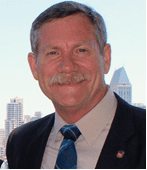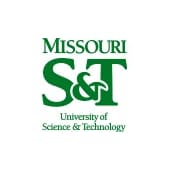My hope is that people should be made aware of how much good can come out of such stark tragedies. A lot more credit should be given to the wisdom exuded by the jurors of the LA County Coroner’s Inquest. Their final salutation was: “A sound policy of public safety and business and engineering judgment demands that the construction and operation of a great dam should never be left to the sole judgment of one man, no matter how eminent, without …checking by independent experts.”
– Dr. J. David Rogers
Table of contents
- J. David Rogers: Education and professional licensure.
- J. David Rogers: Private sector experience.
- Geoforensic studies of dams, levees, and flood control systems.
- J. David Rogers: Transition to Academia.
- Research sponsors.
- Publications.
- Professional Recognition.
- Teaching.
- Teaching Awards
- Instruction of short courses.
- Public Service.
- Media Relations.
- Articles and Presentations
- By Dr. J. David Rogers

| J. David Rogers, Ph.D., P.E., P.G., C.E.G., C.HG. Professor and Karl F. Hasselmann Chair in Geological Engineering Missouri University of Science & Technology B57 McNutt Hall, 1400 N. Bishop Avenue Rolla, MO 65409-0230 (573) 341-6198 voice E-mail: rogersda@mst.edu URL: www.mst.edu/~rogersda |
J. David Rogers: Education and professional licensure.

Dr. J. David Rogers directs Missouri University of Science & Technology’s Virtual Geotechnical Database Laboratory and serves as the Associate Director of S&T’s Natural Hazards Mitigation Institute.
Dr. Rogers holds degrees from the California State Polytechnic University (B.S., Geology 1976) and the University of California, Berkeley (MS, Civil Engineering, 1979; Ph.D. Geological and Geotechnical Engineering, 1982).
Dr. Rogers is a professional civil engineer, geologist, engineering geologist, and hydrogeologist in California. He is a fellow of the Geological Society of America (1996) and the American Society of Civil Engineers (2016).
J. David Rogers: Private sector experience.
From 1984 to 2001 he served as the CEO of Rogers/Pacific, Inc., a civil/structural/geotechnical firm with offices in the San Francisco, Los Angeles, and Honolulu metro areas.
He was also a general partner of Rogers-Caulfield Construction Management, which specialized in innovative stabilization of failing slopes impacting hydraulic structures, linear infrastructure, utilities, and transportation corridors in the western USA and the Pacific Basin.
He has served as principal investigator of numerous post-disaster assessments of structural failures, earthquakes, hurricanes, landslides, floods, volcanic eruptions, tsunamis, highways, dams, and levee failures on six continents.
Geoforensic studies of dams, levees, and flood control systems.
Dr. Rogers has extensive experience in evaluating the stability of dams, levees, and slopes, including landslide dams.

In 1992 he published “Reassessment of the St. Francis Dam Failure,” which was selected for the Case Histories Award of the U.S. Committee on Rock Mechanics of the National Research Council, and the E.B. Burwell Award in Engineering Geology of the Geological Society of America.
In 1995 he wrote a 105-page article titled “A Man, a Dam, and a Disaster” for the Southern California Quarterly, selected for the Carl I. Wheat Award of the Historical Society of Southern California and the R.H. Jahns Distinguished Lecturer Award of the Association of Engineering Geologists and Geological Society of America.
In 1997 he prepared a 76-page article titled “Man-Made Disaster at an Old Landslide Dam Site” which was included in the field guidebook “A Day in the Field with Thomas Dibblee and J. David Rogers” published by the Dibblee Foundation. Rogers’ work on the St. Francis Dam led to a new appreciation of the destabilizing role that ancient landslides could have on dams and other hydraulic structures. This awareness resulted in a comprehensive multi-year inventory by the U.S. Geological Survey released in 2006 that identified at least 153 dams in the United States and 254 dams worldwide that were constructed on or against landslides.
Rogers has continued to serve as a consultant to Naval Facilities Engineering Command, the U.S. Army Corps of Engineers, U.S. Bureau of Reclamation, and the Federal Energy Regulatory Commission as a consulting geological engineer on a wide range of dam studies, and he has prepared articles on many of these structures, as well as more recent articles on various aspects of the St. Francis Dam failure and the role of William Mulholland in the design of the dam, and the impacts it had on other engineers, which were published in 2017 and 2020.

In the wake of Hurricanes Katrina and Rita in 2005, Rogers was selected by the U.S. Geological Survey as a member of their investigation team, and then as a member of the National Science Foundation’s Independent Levee Investigation Team. The State of Louisiana designated Rogers as one of the principal instructors of their Flood Protection and Ecosystem Restoration Professional Development Program in 2007-09.
In 2008 Dr. Rogers received a grant from the National Science Foundation to lead a multi-university effort to assess the levee and flood infrastructure failures caused by widespread flooding of the upper Mississippi basin in Minnesota, Wisconsin, Iowa, Illinois, and Missouri.

During the 2011 flooding of the lower Missouri and Mississippi Basin, he evaluated flood damage between Montana and the Gulf of Mexico, with particular emphasis on the sediment deposited in the Mississippi Delta. He has developed courses for the Army Corps of Engineers in Evolution of Flood Control Engineering and Geotechnical Construction Practice. Rogers is recognized as an expert in geotechnical site characterization and problem-solving, by blending the natural and historic resources unique to each site.
J. David Rogers: Transition to Academia.
In the fall of 1994, Rogers accepted a faculty appointment in civil and environmental engineering and landscape architecture and environmental planning at the University of California, Berkeley. After teaching at Berkeley for seven years he accepted the Karl F. Hasselmann Chair in Geological Engineering at the Missouri University of Science & Technology in 2001.
Research sponsors.
Prof. Rogers’ research interests center on the evaluation and mitigation of natural hazards, including levees and flood control infrastructure, dams, and hydraulic structures, site characterization, virtual geotechnical databases,tunnels and underground openings, fluvial geomorphology, geohydrology, geoforensics,and the evolution of geotechnical engineering theory and practice.
He has also developed artificial intelligence techniques for interpretation of remotely sensed data, combining processing of digital terrain elevation data, SAR, LiDAR, INSAR, DEM files, and multispectral & infrared imagery acquired from inexpensive drone platforms.
Lately, he has been developing downhole sensors to carefully photograph and delineate the physical limits of tunnels, buried tanks, caverns, and other underground openings using boreholes less than 2-inches in diameter.
His research work has been funded by the National Science Foundation, U.S. Geological Survey, National Earthquake Hazard Reduction Program, National Geospatial Intelligence Agency (NGA), Army Research Laboratories, U. S. Army Corps of Engineers, Naval Facilities Engineering Command, and the Federal Highway Administration (FHWA), Springfield Utilities, and The Partnership for Resilient Communities in Santa Barbara.
Much of his recent work is posted at www.mst.edu/~rogersda and on his personal website at www.jdavidrogers.net/
Publications.
Rogers has authored over 245 technical papers, articles, book chapters, and research reports, many of which deal with levees, dams, and slope stability issues, world-wide.
Professional Recognition.
Rogers’ work on landslide hazards, mitigation techniques, and dam and levee failures have been recognized by several awards, including:
- Karl and Ruth Terzaghi Outstanding Mentor Award of the Association of Environmental & Engineering Geologists (2016)
- Gold Publication Awards from the American Society of Business Publication Editors for feature articles on Hoover Dam (2011) and the Panama Canal (2015)
- Presidential Citations from the Association of Environmental Geologists for his forensic evaluations of levee failures in Hurricane Katrina (2006); and efforts in mentoring students (2010)
- R.H. Jahns Distinguished Lecturer in Engineering Geology Award of AEG and GSA (1996)
- E.B. Burwell Award of the Geological Society of America (1994)
- Rock Mechanics Award of the National Research Council (1994)
- Distinguished Project Award of the American Public Works Association (1994)
- Carl Irving Wheat Memorial Award of the Historical Society of Southern California for his forensic reconstruction of the 1928 St. Francis Dam failure (1996).
Teaching.
Rogers teaches undergraduate courses in physical geology, engineering geology & geotechnics, evolution of flood control engineering, military geology, and the capstone senior design and problem-solving course. His graduate courses include geotechnical construction practice and applications of geological engineering, which are taught year-round (fall, spring, and summer) for S&T’s online master’s program and the master’s degree program for the Army Corps of Engineers.
All 15 lectures from his engineering geology course are posted on YouTube at www.youtube.com/watch?v=fvoYHzAhvVM&t=39s as a public service that has attracted >247,000 viewings over the past decade. It is one of only two online courses world-wide that are approved for continuing education credits by the British Geotechnical Association.
Teaching Awards
- 7 Outstanding Teaching Awards from the Department of Civil & Environmental Engineering at the University of California-Berkeley (1994-2001)
- 20 Outstanding Teaching Awards from S&T Committee on Effective Teaching and S&T School of Extended/Global Learning (2002-2020)
- Outstanding Professor Award of Excellence (2017)
- Extraordinary Faculty/Staff Award from Missouri S&T Student Council (2015)
- Senior Faculty Award Missouri S&T Academy of Mines & Metallurgy (2014)
- Institution Faculty of the Month Award, National Residence Hall Honorary Society (2013)
Instruction of short courses.
In 1984 Dr. Rogers began teaching short courses on geologic hazards and engineering mitigation techniques for the Universities of Wisconsin, Michigan, California-Berkeley, California-UCLA, Northeastern University, and the Georgia Institute of Technology.
In 1987 he and his Rogers/Pacific associate Dr. Robert B. Olshansky published a 67-page article on “Landslide Policy in the United States” in Ecology Law Quarterly, which became the most-cited reference on public policies to curtail slope stability hazards.
In 1993 his efforts to educate decision-makers were recognized by the Award of Merit in Environmental Education by the Association of Bay Area Governments in San Francisco.
Public Service.

- Rogers is currently leading a three expert panel appointed by The Partnership for Resilient Communities, and NGO coordinating the mitigation schemes for the January 2018 fire-flood debris flows in Montecito, CA which killed 23 people, destroyed 65, and damaged 462 residences and 28 commercial structures, causing $1 billion in damages.
- In 2014-16 Rogers chaired the Forensic Expert Team for the State of Washington Attorney General investigating the deadly Oso (State Route 530) Landslide, which was the deadliest in American history, killing 43 people.
- In 2011-13 he served on the National Academies Panel charged with examining “Levees and the National Flood Insurance Program: Improving policies and practices.”
- From 2011-16 he served on the Resilient and Sustainable Infrastructure Networks team funded by the National Science Foundation to make a five-year examination of the California Bay Delta flood protection systems.
- In 2010-12 he was a member of the Mississippi Delta Science & Engineering Special Team convened in wake of the Deep Water Horizon spill in the Gulf of Mexico. The team’s work was summarized in the book “Perspectives on the Restoration of the Mississippi Delta: The Once and Future Delta,” Springer Science, Amsterdam, released in 2014.
- In 2005-10 he served on the Coastal Louisiana Recovery Panel convened by Environmental Defense Fund to evaluate mitigation measures that might be employed to protect low-lying coastal areas from hurricane damage.
Media Relations.
In 1988 Rogers co-wrote and played the principal role in “Showcase of the Ages,” a documentary seeking to explain the vast expanse of geologic time in a whitewater raft trip through the Grand Canyon, which aired on PBS.
Since coming to S&T in 2001 he has served as a frequent contributor to network news services, newspapers, talk radio, PBS, NPR, and numerous documentaries. These average about 15 interviews per year.
Articles and Presentations
By Dr. J. David Rogers
Link: http://web.mst.edu/~rogersda/st_francis_dam/St-Francis-Dam-for-ASCE-Press.pdf
IMPACTS OF THE 1928 ST. FRANCIS DAM FAILURE ON GEOLOGY, CIVIL ENGINEERING, AND AMERICA
THE ST. FRANCIS DAM FAILURE
Worst American Civil Engineering Disaster of the 20th Century
MAPPING THE ST. FRANCIS DAM OUTBURST FLOOD WITH GEOGRAPHIC INFORMATION SYSTEMS
Lessons Learned from the St. Francis Dam Failure
